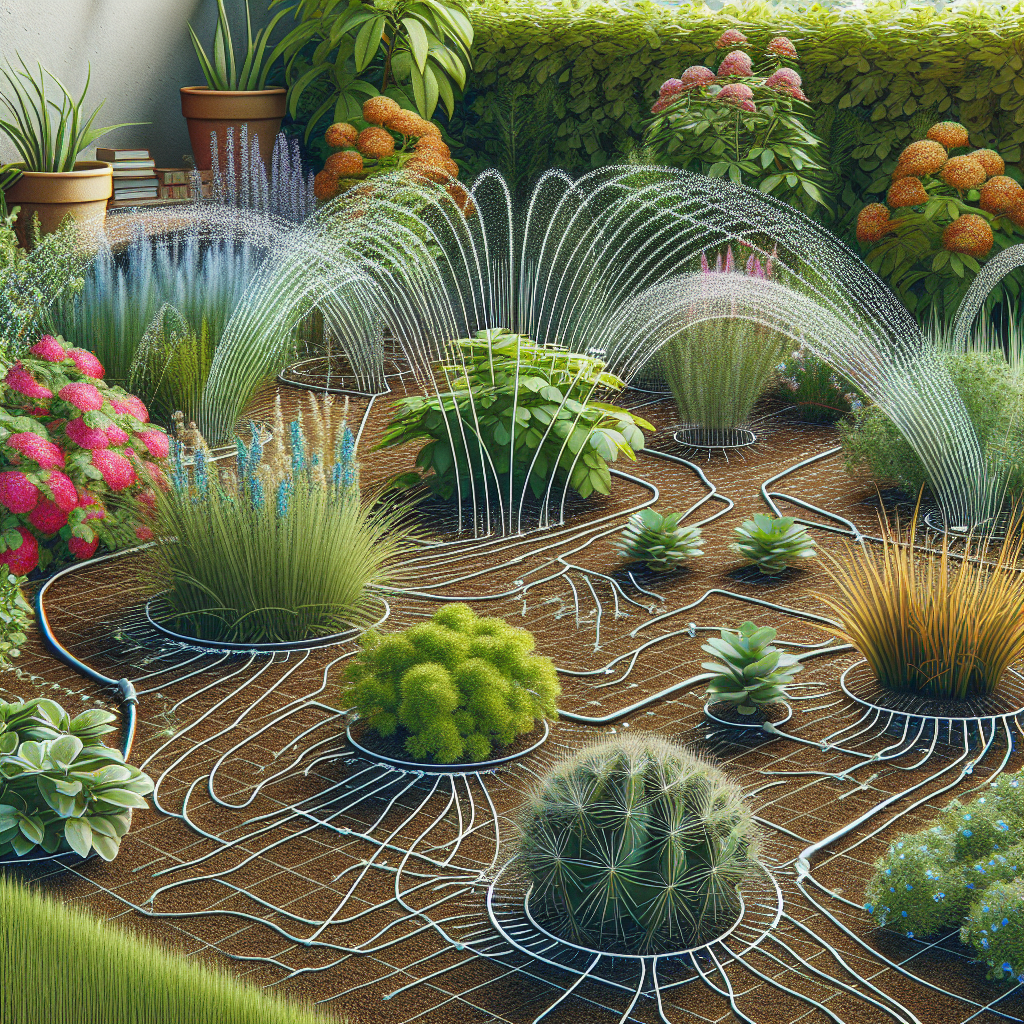Maintaining a garden can be a time-consuming and labor-intensive task. From watering plants to weeding and fertilizing, it can sometimes feel like there is always something that needs to be done. However, with the help of slow drip irrigation systems, gardeners can create a low maintenance garden that requires minimal effort while still providing the necessary water to keep plants healthy and thriving.
Slow drip irrigation is a method of watering plants in which water is delivered directly to the plant’s roots through a network of tubing and emitters. This system is designed to deliver water slowly and evenly over a period of time, allowing plants to absorb moisture more efficiently and reducing the risk of overwatering or underwatering.
One of the main benefits of using slow drip irrigation in a garden is that it helps conserve water. Traditional methods of watering, such as overhead sprinklers or hand watering, can often result in water waste due to evaporation or runoff. With slow drip irrigation, water is delivered directly to the root zone where it is needed most, reducing wastage and ensuring that plants receive an adequate supply of moisture.
Another advantage of using slow drip irrigation is that it helps prevent weed growth. By delivering water directly to the plant’s roots and not onto the soil surface, this method deprives weeds of the moisture they need to germinate and grow. This can help reduce the need for manual weeding and save gardeners time and effort in maintaining their garden.
In addition to conserving water and preventing weeds, slow drip irrigation also promotes healthier plant growth. By delivering water directly to the root zone, plants are able to absorb moisture more efficiently and effectively. This can result in stronger root systems, healthier foliage, and increased resistance to pests and diseases.
To create a low maintenance garden with slow drip irrigation, there are several steps that gardeners can take:
1. Plan your layout: Before installing a slow drip irrigation system, it’s important to plan out your garden layout and determine where you want to place your tubing and emitters. Consider factors such as plant size, spacing, and soil type when deciding on placement.
2. Choose the right components: There are many different types of tubing, emitters, fittings, and controllers available for creating a slow drip irrigation system. Consider factors such as water pressure, flow rate, and plant type when selecting components for your system.
3. Install your system: Once you have chosen your components, it’s time to install your slow drip irrigation system. Start by laying out your tubing along the desired route, making sure to secure it in place with stakes or clips. Attach emitters at regular intervals along the tubing according to plant spacing requirements.
4. Test your system: Before turning on your system for regular use, it’s important to test it out first. Check for leaks or clogs in the tubing or emitters and make any necessary adjustments before running your system for an extended period.
5. Monitor your system: Regularly check on your slow drip irrigation system to ensure that it is working properly. Inspect tubing for damage or wear, clean out clogged emitters if necessary, and adjust water flow rates as needed based on weather conditions or plant growth.
By following these steps and incorporating a slow drip irrigation system into your garden design, you can create a low maintenance outdoor space that requires minimal effort while still providing plants with the essential moisture they need to thrive. With proper planning and installation techniques in place, you can enjoy all the benefits of having a healthy garden without having to spend hours tending to it each week.
Overall creating a low maintenance garden with slow drip irrigation can be an effective way for gardeners looking for ways reduce laborious tasks involved with traditional gardening while still ensuring healthy plant growth through efficient watering practices In conclusion creating such gardens will not only save time but also contribute towards conservation efforts by eliminating wastage associated with other watering methods thereby promoting sustainable gardening practices which are crucial given current environmental challenges we face today














